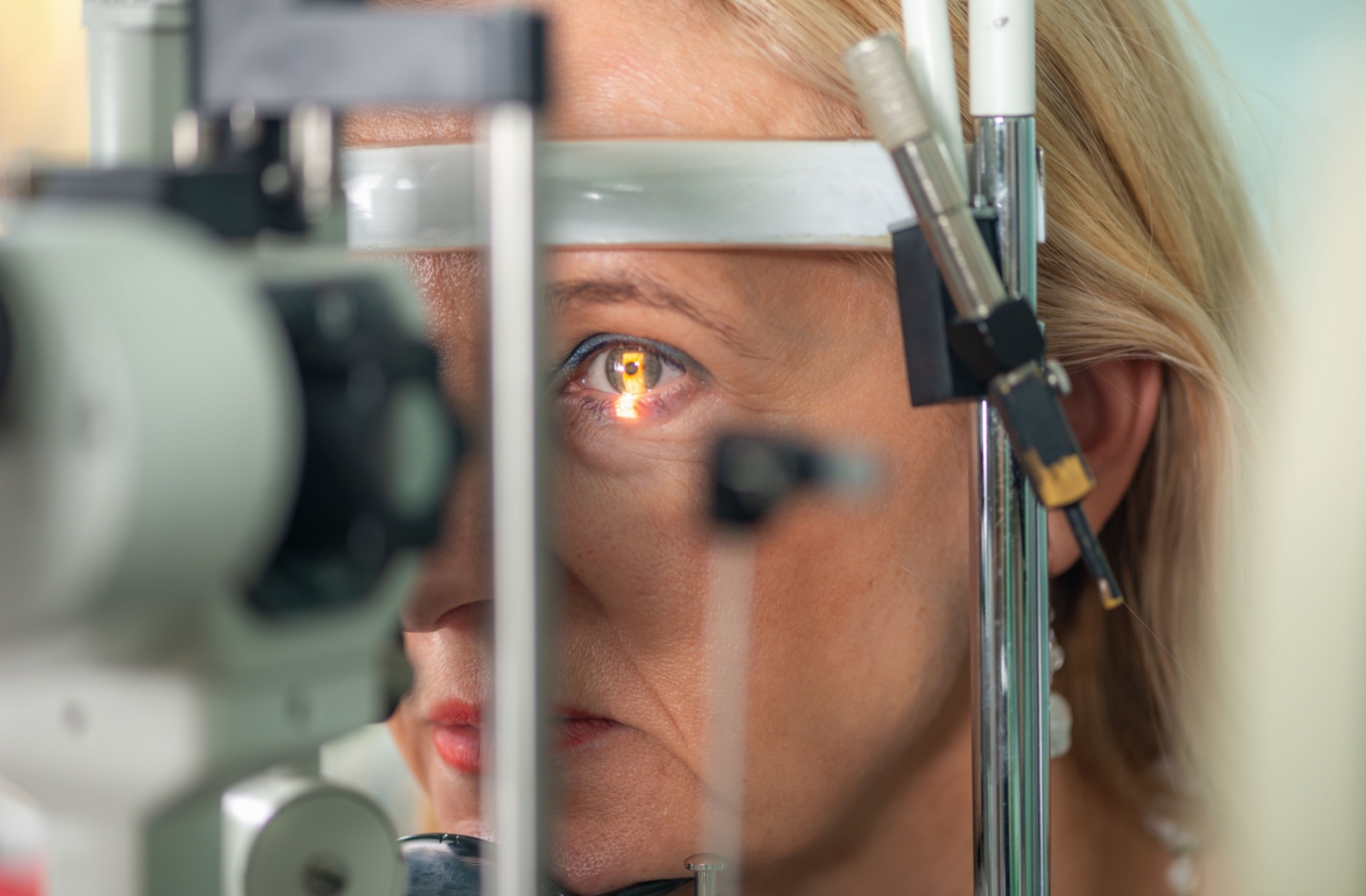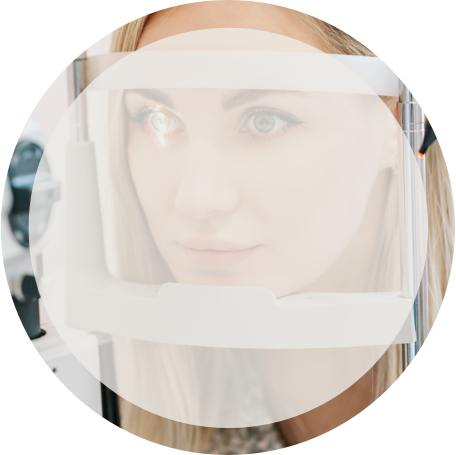Glaucoma doesn’t always make its presence obvious—at least, not in the beginning. However, if left unnoticed, glaucoma can slowly cause permanent damage to your vision. It’s a complicated eye condition, and to manage glaucoma, you’ll need professional support.
The first sign of glaucoma is often a subtle loss of peripheral vision. This tends to happen so gradually that most people don’t even realize it. It’s easy to miss glaucoma in the earlier stages—this is just one reason why regular eye exams are so important.
What Is Glaucoma?
Glaucoma isn’t just one condition. It’s actually a group of eye conditions that damage the optic nerve—the connection between your eye and brain. This develops due to high levels of pressure inside the eye.
Inside the eye, you have a complex network of systems. Some carry nutrients and fluids to the eye while others drain away old material. This is delicately balanced—when intraocular pressure levels are off, all kinds of problems can develop.
When pressure is too high inside of your eye, this will lead to glaucoma. This is a serious problem, and it can easily cause permanent vision loss if you don’t seek treatment. If left untreated, glaucoma can permanently damage the optic nerve and cause irreversible peripheral vision loss.
With glaucoma, early detection is essential. The sooner the problem is detected, the easier it is to prevent vision loss. Regular check-ups with your eye doctor are one of the best ways to stay ahead of this condition.
Are There Different Types Of Glaucoma?
Glaucoma isn’t just one thing. It includes several types, and each has its own cause, symptoms, and treatments. It’s a complicated condition that refers to any change in intraocular pressure or damage to the optic nerve.
Open-Angle Glaucoma
This is the most common type of glaucoma. Open-angle glaucoma tends to develop gradually and doesn’t show obvious symptoms. With open-angle glaucoma, there’s rarely any physical discomfort, and your vision will likely stay fine—at least at first.
This develops when the drainage canals in your eye become clogged over time. This slows down fluid flow, which leads to increased pressure inside your eye. As pressure rises, it damages the optic nerve and reduces your peripheral vision.
That’s why this type is often referred to as the “silent killer of vision.” By the time peripheral vision starts to fade, the optic nerve is already permanently damaged. Regular eye screenings are essential for catching open-angle glaucoma.
Normal-Tension Glaucoma
Normal-tension glaucoma is a little different than other types. It occurs when eye pressure isn’t too high—it’s entirely within the normal range. Regardless, the optic nerve is damaged.
It’s not entirely clear why this happens. However, it’s believed to be due to reduced blood flow to the optic nerve and damaged structures in the eye. These, when combined with trauma to the area or underlying factors, eventually damage the nerve itself.
This commonly affects people who have a family history of the condition. Without regular check-ups, it’s easy to overlook, since it doesn’t typically cause discomfort or vision changes until permanent damage occurs.
Angle-Closure Glaucoma
Angle-closure glaucoma develops quickly—and it’s considered a medical emergency. This occurs when the drainage angle in your eye is suddenly blocked. This causes a rapid increase in eye pressure, and without medical intervention, it permanently damages the optic nerve.
You can recognize angle-closure glaucoma by:
- Severe eye pain
- Sudden vision loss or blurred vision
- Seeing halos around lights
- Redness in the eye
- Nausea or vomiting accompanying visual symptoms
If you notice any of these, immediately seek medical attention. Without professional help, you could be at risk of losing your vision.
Secondary Glaucoma
Secondary glaucoma is complicated. This isn’t a condition in itself—instead, it develops as a reaction to another health condition or eye issue. Secondary glaucoma can occur after:
- Inflammation
- Eye injuries
- Diabetes
- Late-stage cataracts
- Steroid use
Essentially, anything that alters the eye’s ability to drain fluid can result in secondary glaucoma. It’s easy to miss this condition.
To treat secondary glaucoma, an optometrist will need to address the underlying cause. Then, they’ll tailor treatment to reduce your internal eye pressure. This holistic approach helps treat both problems at once.

Congenital Glaucoma
Congenital glaucoma is rare. It develops from birth and affects infants or young children. It’s caused by improper development of the drainage system in the eye before birth.
To recognize congenital glaucoma, keep an eye out for:
- Cloudy or enlarged corneas
- Excessive tearing
- Light sensitivity
- Noticeable enlargement of one or both eyes
- Frequent eye rubbing or irritability in infants
If you notice these signs, immediately visit an optometrist near you. Congenital glaucoma can be managed with early intervention.
How To Treat Glaucoma
There is no current cure for glaucoma. However, that doesn’t mean it can’t be treated. There are several approaches to glaucoma treatment designed to protect future vision.
Specific treatments depend on the type and severity of the glaucoma in question. However, they typically aim to lower internal eye pressure to prevent future optic nerve damage.
The standard treatments for glaucoma include:
- Prescription eye drops that reduce eye pressure by improving fluid drainage or decreasing fluid production.
- Oral medications in cases where drops alone aren’t enough to control pressure, usually given with acute angle closure.
- Laser treatments aimed at improving the efficiency of the eye’s drainage system.
- Surgical procedures, like trabeculectomy, which create new ways for fluid to drain from the eye.
Your optometrist will work closely with you to create a treatment plan designed for your specific needs. Regular monitoring is key to managing glaucoma!
Regular Testing for Glaucoma
Glaucoma is a complex condition. It’s subtle, it’s slow, and it can be extremely problematic. However, early intervention makes a world of difference—and our team at Family Vision Care is here to help.
If you’re worried about glaucoma or have noticed anything unusual, come visit our team for a comprehensive eye exam. We’ll work with you to find what’s causing your symptoms. You deserve a personal approach to eye care, and we’re here to help, so book an appointment with us today!
















